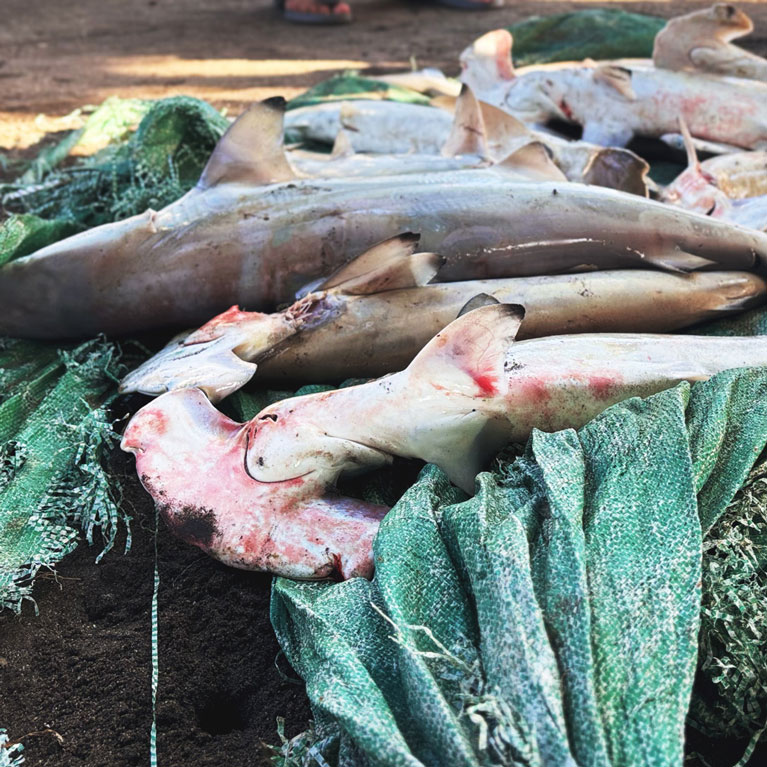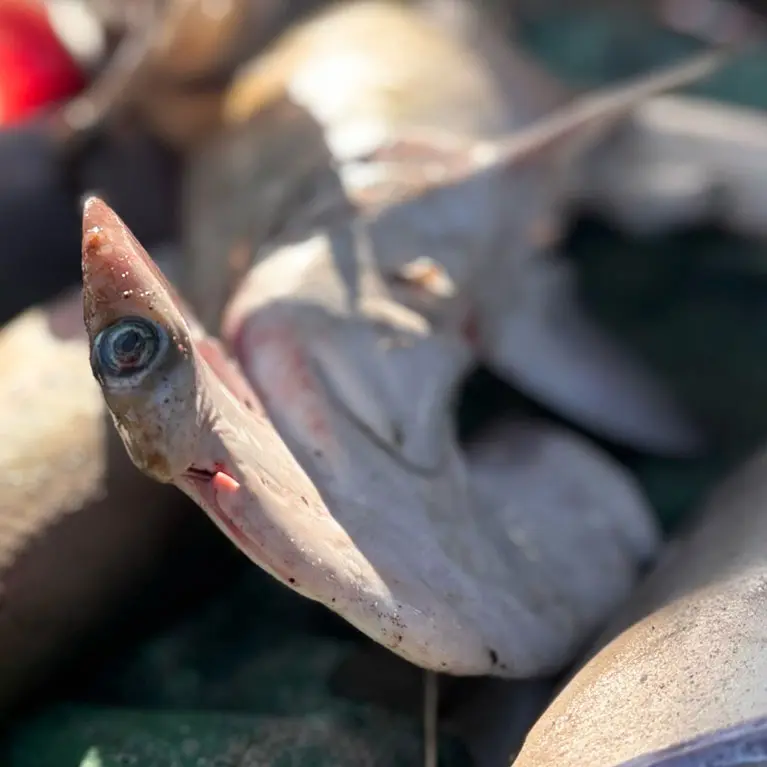Local solutions to deliver positive outcomes for Lunyuk’s fisheries
Trade-offs are top of M Said’s mind as he navigates the need for shark conservation to be balanced with improving the well-being of Sumbawa’s coastal communities. He is focusing on communities in Lunkyuk, an understudied region in Indonesia and a nursery ground for Critically Endangered hammerheads and wedgefish. Through participatory research, he wants to understand how various interventions will influence whether fishers catch and retain these sharks and rays in Lunyuk. Based on the results, he will pilot fishery management intervention and evaluate its impacts on fishing mortality and human well-being.
I was born on the small island of Lombok in West Nusa Tenggara, a province of Indonesia known for its stunning landscapes and rich biodiversity. From childhood, I developed a strong passion for exploring nature, understanding its composition and wondering how to co-exist with it in sustainable ways. This curiosity steered my academic pursuits towards natural sciences. I studied for my Bachelor’s degree in chemistry, which allowed me to examine environmental issues at micro-level. After graduating from Mataram University, I worked as an assistant researcher for environmental impact analysis and assessment. During this period, my dedication to environmental...


Developing and testing incentive-based approaches for shark and ray conservation in small-scale fisheries in Lunyuk
Our key objective is to reduce fishing mortality of hammerhead sharks and wedgefish while maintaining or improving the well-being of coastal communities in Lunyuk, Sumbawa.
Indonesia is a global priority region for shark and ray conservation, and Lunyuk provides critical habitat for Critically Endangered species: hammerheads and wedgefish. However, these species are frequently caught by small-scale fishers using indiscriminate gear (gill nets and longlines), and then are eaten or sold. Because of this, there is a difficult trade-off between shark conservation and coastal livelihoods, which this project aims to address by designing locally appropriate solutions that deliver positive outcomes for sharks and people.
Sharks, rays and their cartilaginous relatives are among the world’s most threatened species. This is primarily due to overfishing, caused by the cumulative impacts of global fisheries, which take sharks as targeted and incidental catch. There is an urgent need for fishery management reforms that reduce the mortality of threatened species. However, implementing such reforms is challenging in small-scale, mixed-species fisheries in the tropics, where hotspots that prioritise shark and ray conservation (in terms of species diversity and endemism) overlap with hotspots of fishing pressure and human dependence on marine resources. Indonesia is both a global priority region for shark conservation and the world’s largest shark-fishing nation, dominated by small-scale fisheries in which all catches have economic or subsistence value. This creates trade-offs between marine biodiversity conservation and the livelihoods and well-being of coastal communities, which in turn generates challenges for compliance management (fishers may not be willing to comply with fishery management reforms if they do not agree with them or if such reforms lead to negative social and economic outcomes). This project focuses on an under-studied location in Indonesia: Lunyuk, Sumbawa. Preliminary research suggests that Lunyuk is a nursery ground for Critically Endangered hammerheads and wedgefish, but they are frequently caught by small-scale fisheries in the area due to a lack of management and the high dependence of coastal communities on marine resources.
The overarching aim of this project is to develop and test locally appropriate interventions to mitigate the overfishing of Critically Endangered sharks and rays in Lunyuk, while ensuring that coastal communities are no worse off. Such interventions would focus on the use of more discriminate fishing gear and/or providing compensation for released sharks or rays.
To deliver this aim, our objectives are:
- To conduct participatory research to predict how different interventions will influence a fisher’s decision to capture and retain Critically Endangered sharks in Lunyuk and to use the results to design effective interventions.
- To pilot a fishery management intervention in Lunyuk based on the results of the research. This would probably focus on the use of different gear and/or a compensate-to-release scheme.
- To experimentally evaluate the impacts of the intervention(s) on conservation outcomes (fishing mortality) and human well-being outcomes, and use this evidence to adapt the programme and/or scale it up.

